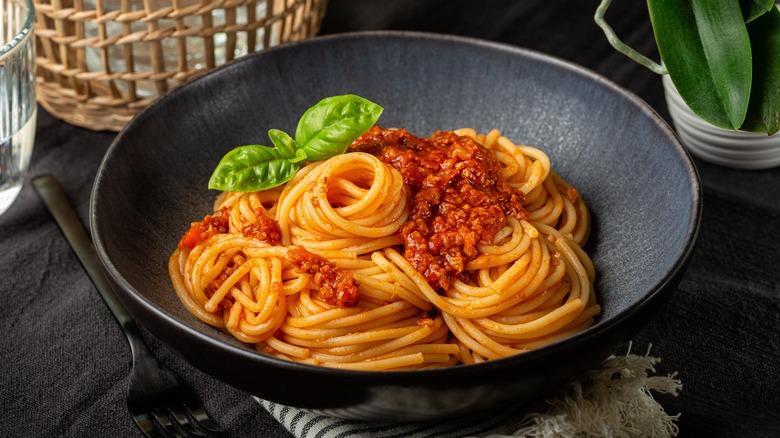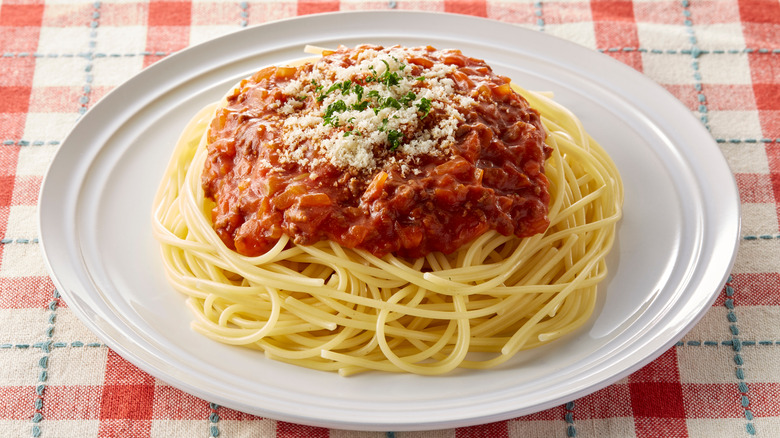The Subtle Difference Between Spaghetti And Spaghettini
In the song "Let's Call The Whole Thing Off," Ella Fitzgerald and Louis Armstrong sing, "You like potato and I like potahto. You like tomato and I like tomahto. Potato, potahto, tomato, tomahto, let's call the whole thing off." Spaghetti and spaghettini seem like they also belong in the song, because, well, they sound synonymous, and upon first glance, they appear to be twins.
As it turns out, they are related but not identical — with a subtle difference between the two. The thickness of these noodles are on a spectrum. On one side, you have spaghettini, the thinnest version. Then on the opposite side, you have spaghettoni, which is much thicker. Smack dab in the middle is spaghetti, the Goldilocks of noodles — not too thick, not too thin, but just right.
In terms of what to pair each noodle with, spaghettini is typically accompanied by seafood and a lightweight sauce or olive oil. On the other hand, spaghetti — being a little thicker — can absorb a heavier sauce like marinara and accommodate richer additions like meatballs or sausage.
Different dishes for spaghetti and spaghettini
Now that you know the difference between spaghetti and spaghettini, it's time to play around with several different types of meals to make with both noodles. Even though you can't go wrong with spaghetti and meatballs (there is even a way to make spaghetti for the price of $4), there are other ways to liven up your plain spaghetti. Try toasting the noodles in a skillet to bring out a nuttier flavor, drizzling in some sun-dried tomato or chile-infused oil, or adorning the top of the pasta with burrata or asiago cheese instead of a traditional Parmesan. Additionally, for extra spice, a dash of red pepper flakes to the sauce will kick up the heat and perk up the pasta even more.
In regards to spaghettini, the ideal dish for this noodle is cacio e pepe. It's simple and light, yet full of so much flavor and comfort. Along with olive oil, pepper, and pasta water, pour the cooked spaghettini into a sauté pan, then add grated Parmigiano Reggiano or Pecorino Romano (and throw in some shallots if you really want the perfect cacio e pepe). If you're craving seafood, consider whipping up a colorful cauliflower and scallop pasta, as spaghettini pairs perfectly with the lemon zest, lemon juice, and fresh herbs.


